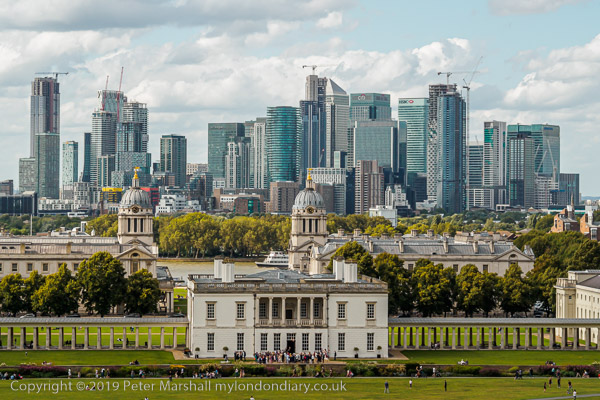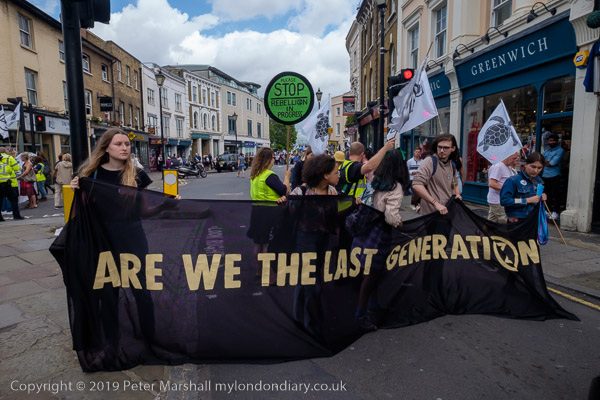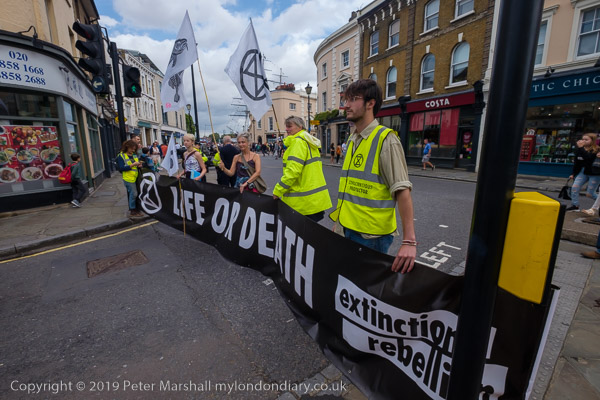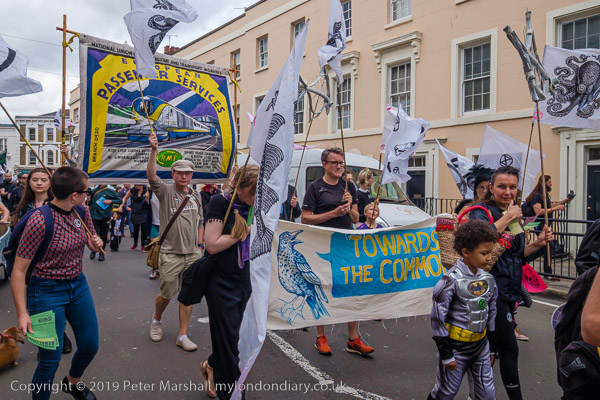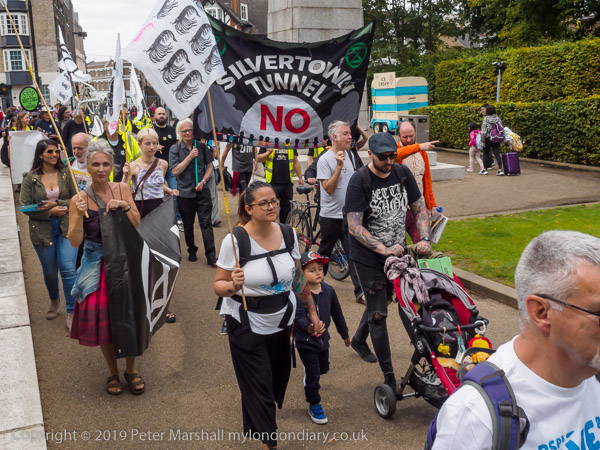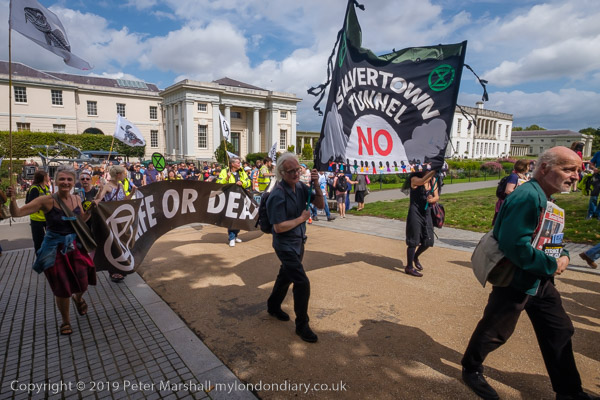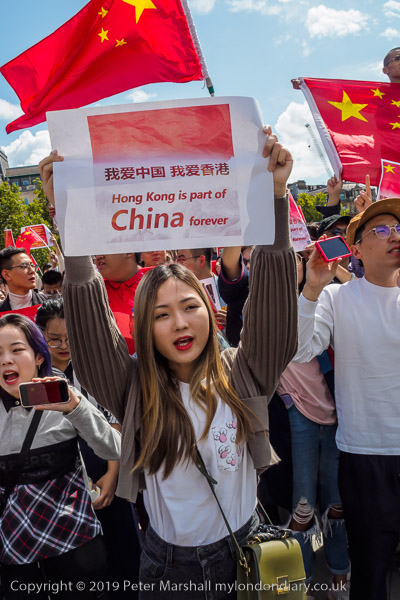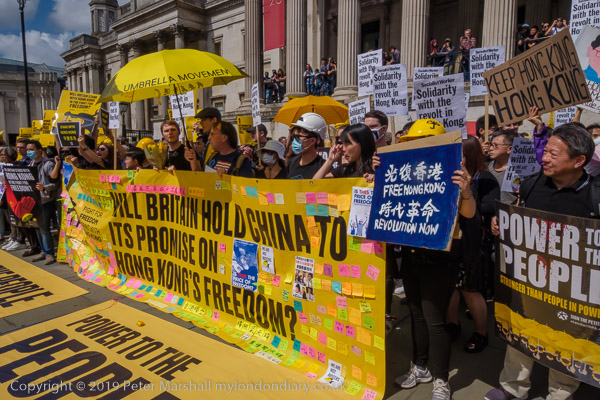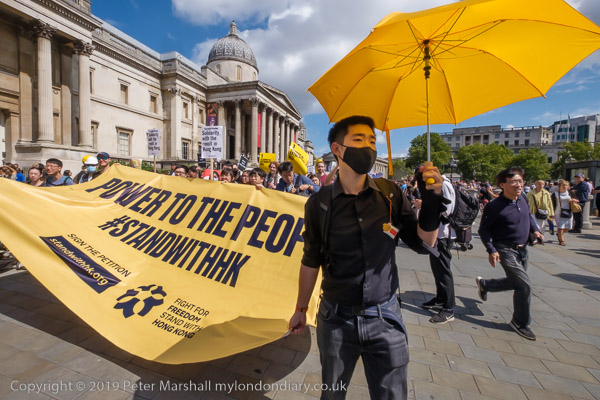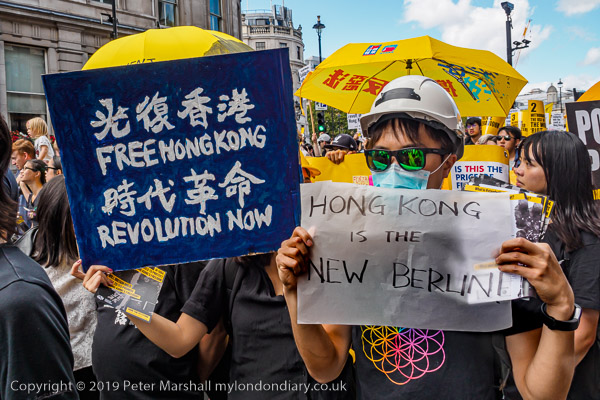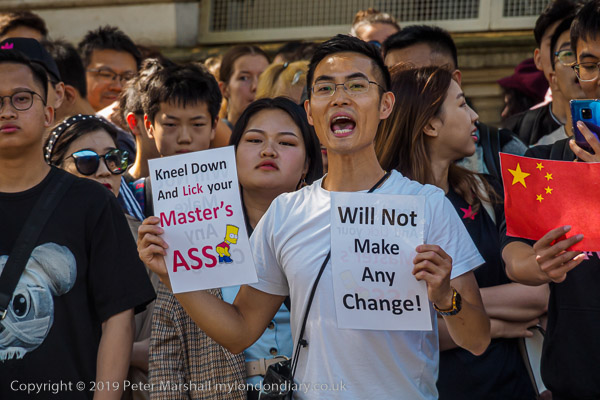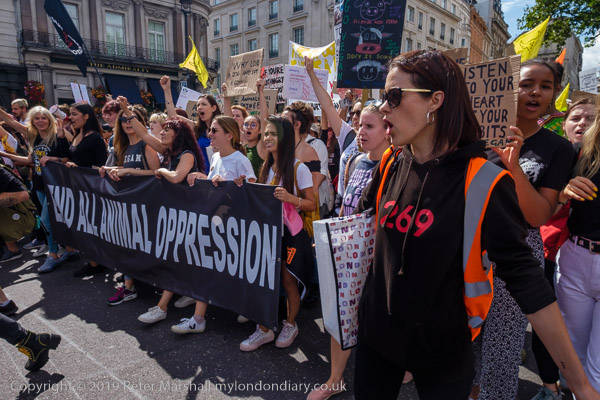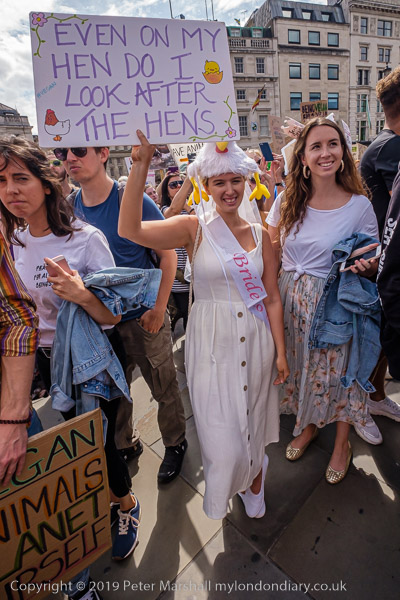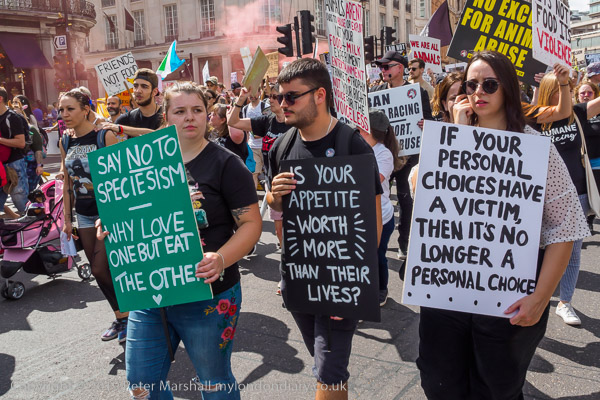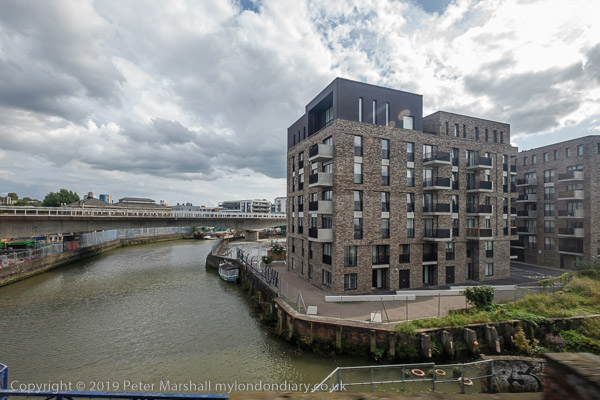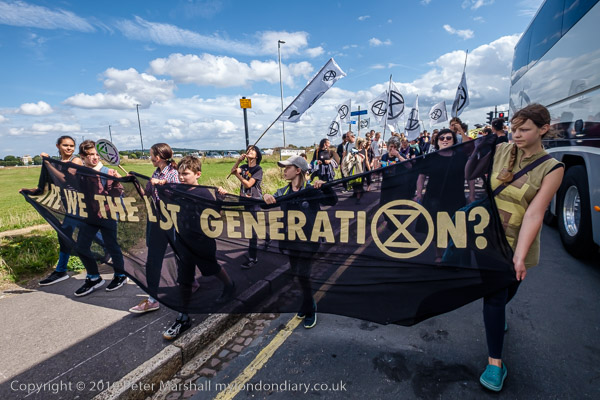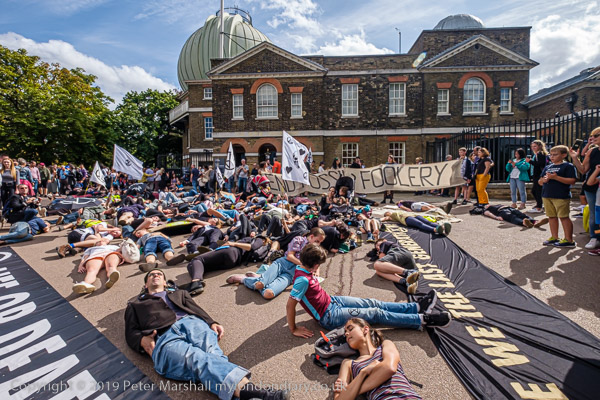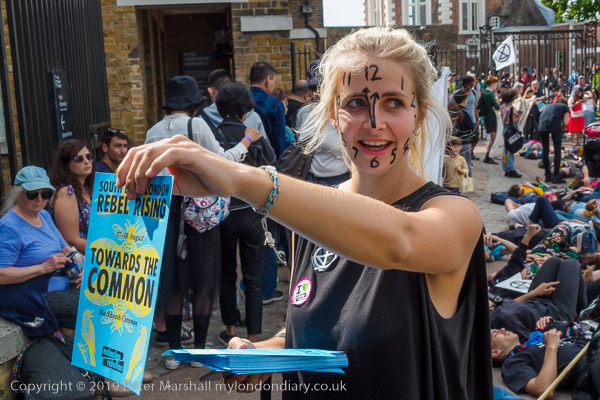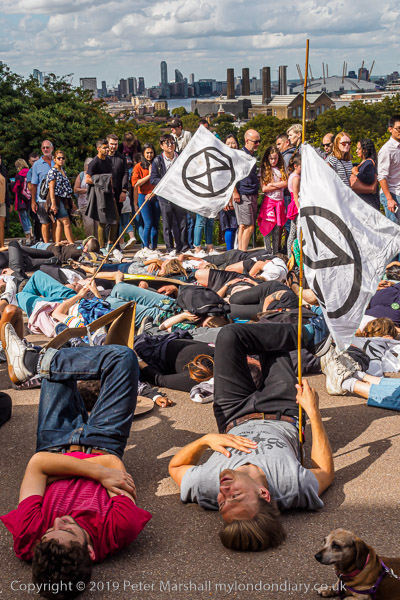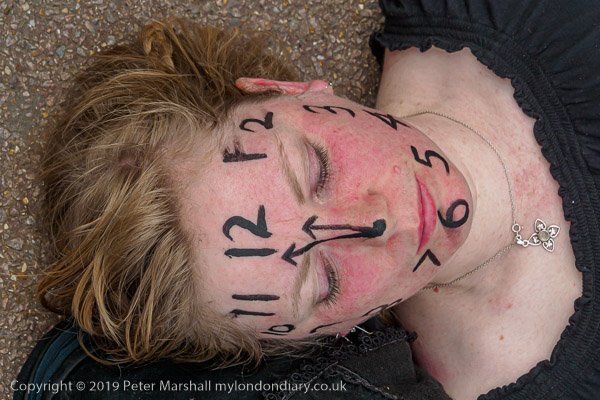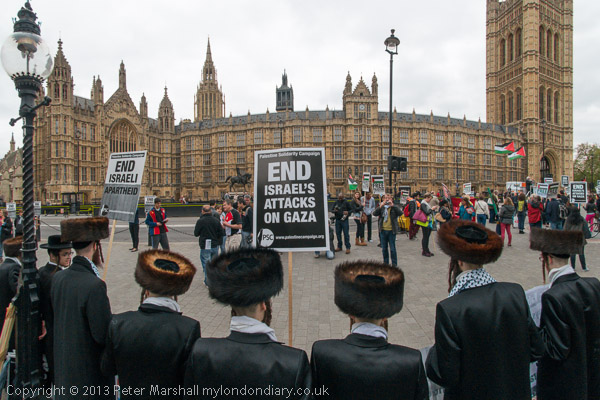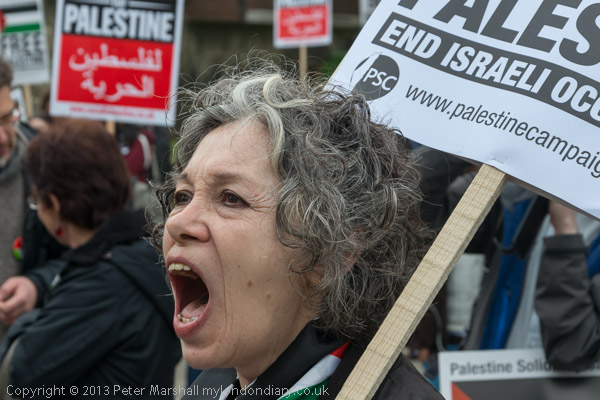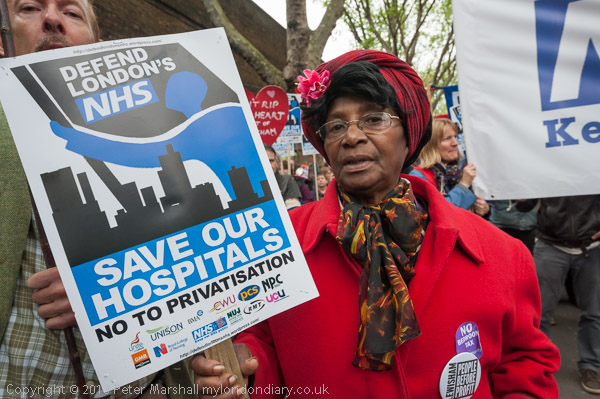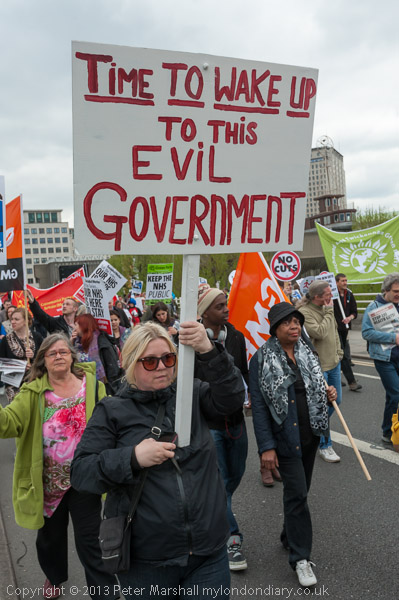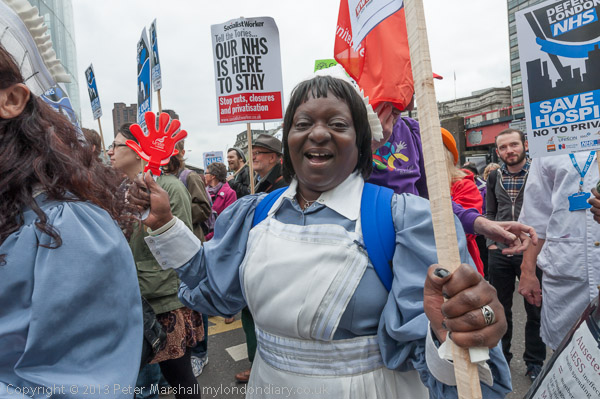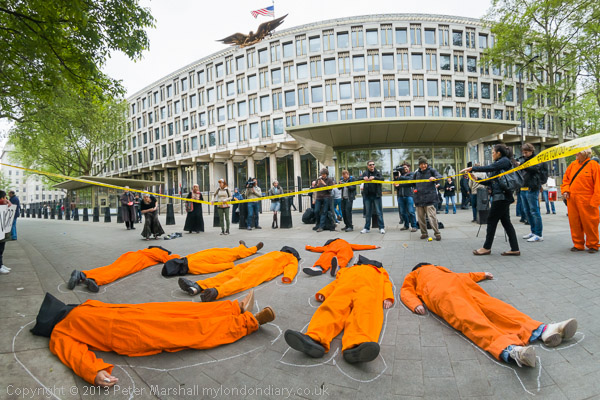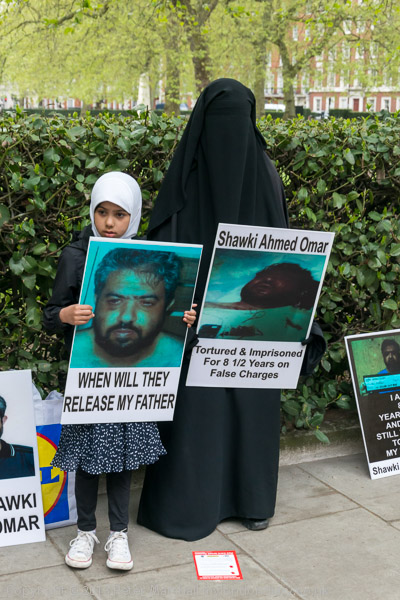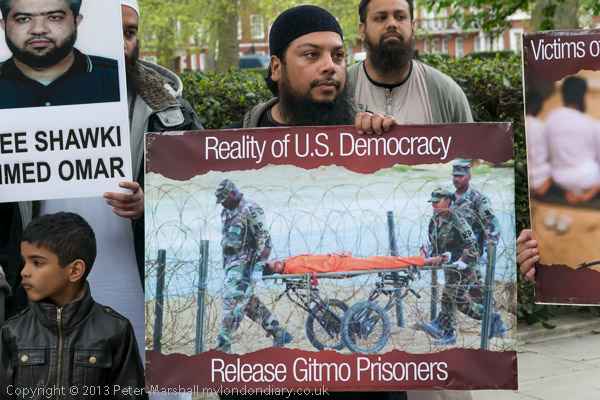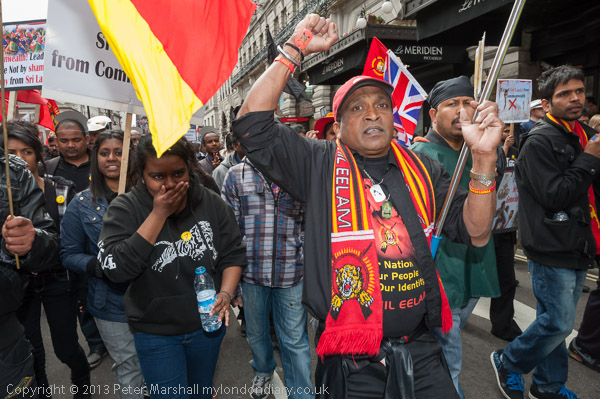Saturday 21st September 2019 was an even more varied day than usual for me in London. I began by travelling to Bow Creek for a duck race, moved to Trafalgar Square for a climate protest, then visted the weekly Zimbabwe vigil before going to Catford for a march against air pollution.
Bromley-by-Bow to Star Lane & Cody Dock Duck Race
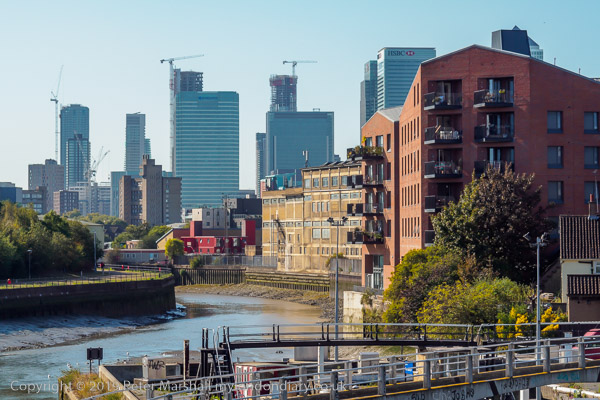
It was a fine day and still warm for the time of year as I walked from Bromley-by-Bow District Line the short distance to Tweletrees Crescent and Bow Creek.
I’d decided to come to see the Duck Race along Bow Creek being organised by the people at Cody Dock, but had arrived early to give myself time to revisit the gas works memorial site nearby.
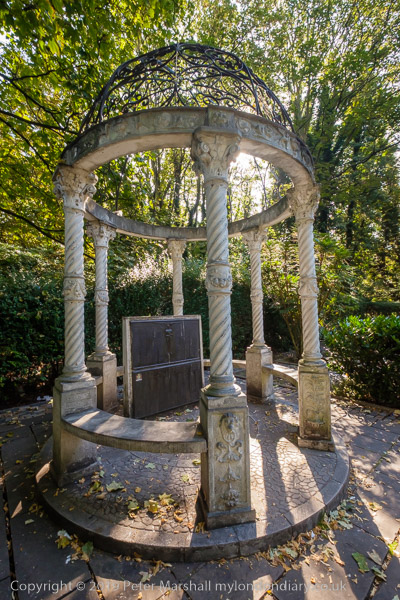
Bow Creek is the tidal section of London’s second river, the River Lea, and the duck race was a part of the ‘Lighting Up the Lea’ festival for ‘Totally Thames 2019’. It was meant to start at 11.00 but this was delayed as the people in canoes who were to shepherd the ducks were a few minutes late in arriving.
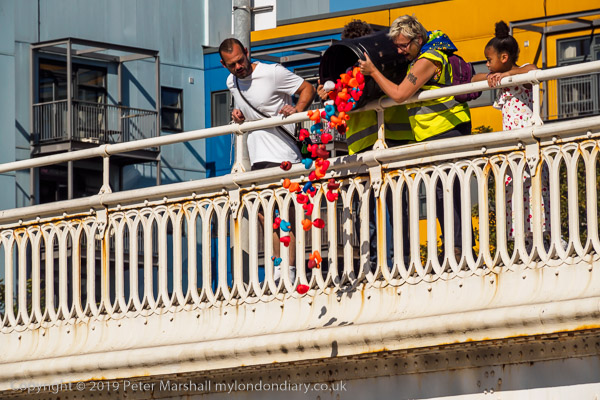
It was close to low tide, and there was little water in the creek when the ducks were dropped from the bridge, and a westerly breeze soon blew the ducks onto the mud on the east side of the creek.
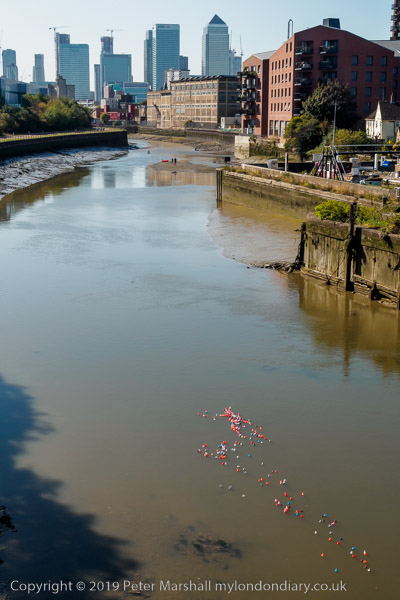
Cody Dock’s Simon Myers had beached his kayak on the gravel bank a hundred yards or so downstream and strode through the shallow stream and mud to rescue the ducks and through them back into the middle of the stream. But the breeze soon returned them to the mud and he had to get them again.
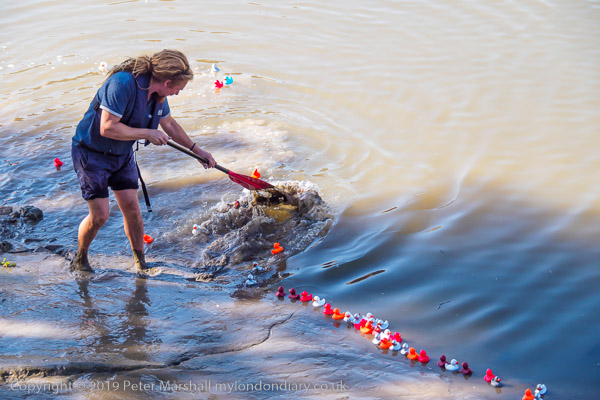
I decided I had to move on to complete my walk and get back to central London for my next event and walked on towards Cody Dock, past several small groups of people waiting to see their ducks. At Cody Dock there were a small line of catchers waiting hopefully in the stream, but they were in for a rather long wait.
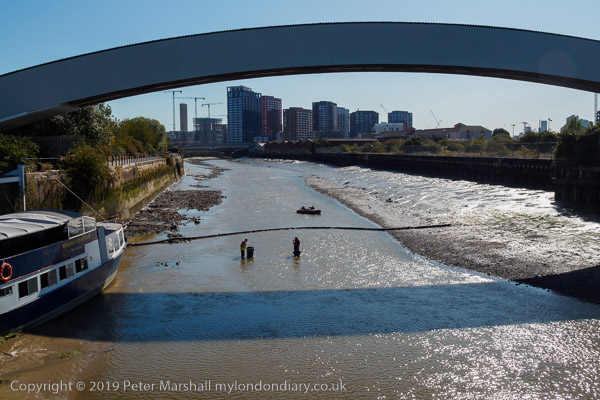
I’d hoped to be able to continue my walk by the riverside to Canning Town, but this further section of the Bow Creek path has yet to be opened, and after taking a few pictures at Cody Dock I made my way to Star Lane DLR station.
Cody Dock Duck Race
Bromley-by-Bow to Star Lane
XR Youth International – Trafalgar Square
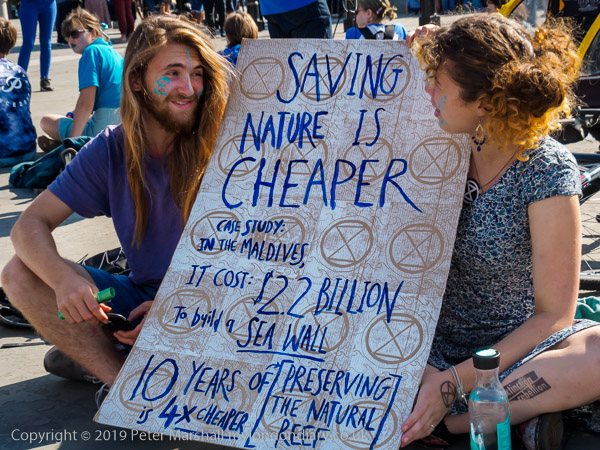
Members of Extinction Rebellion Youth International came to Trafalgar Square and held a brief protest for the UN Climate conference.
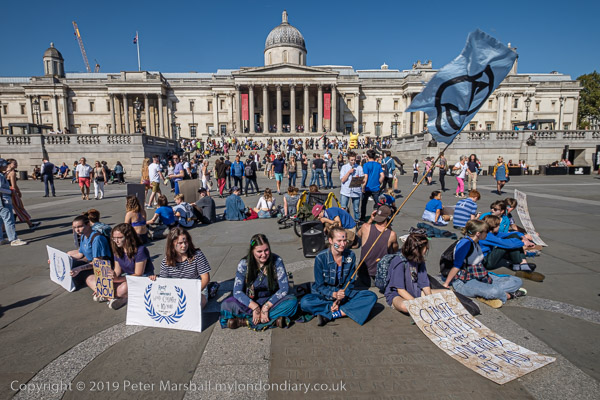
This was a rather more low-key event than I had expected and the group was ignored by heritage wardens as they sat in a circle in the centre of the square with posters while one member at the centre read the letter they are sending to the UN calling for real urgent action to avert the impending climate catastrophe.
Zimbabwe protests continue – Strand
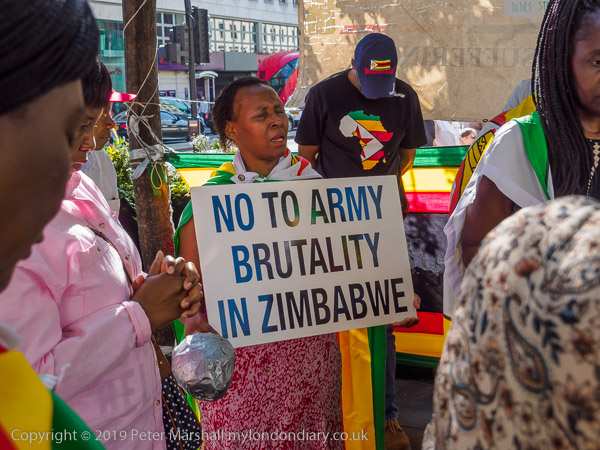
The weekly Zimbabwe Vigil every Saturday at the side of the embassy at 429 Strand began on 12th October 2002. I’ve joined it and photographed occasionally over the years, but mainly for special occasions. It’s hard to say something new about an event which happens every week.
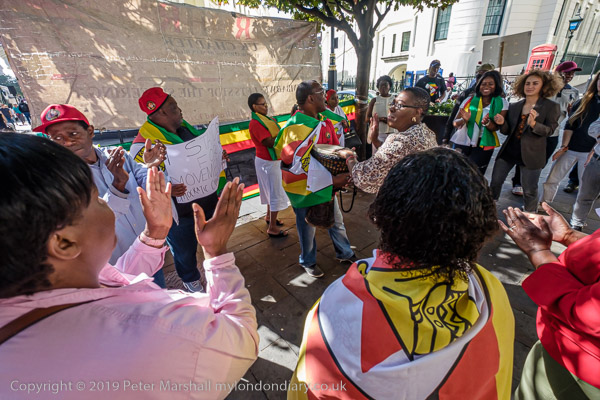
Mugabe had been forced to resign in 2017 died earlier in the month and had died two weeks before my visit, but the vigils continue and little has changed in Zimbabwe. His successor Emmerson Mnangagwa was Mugabe’s right-hand man for 40 years, and is accused of the genocide of over 20,000 Ndebeles in the 1980s. Although he promised reform he has delivered state terrorism and protesters have been killed, beaten, tortured and raped by the security forces.
Clean Air for Catford Children
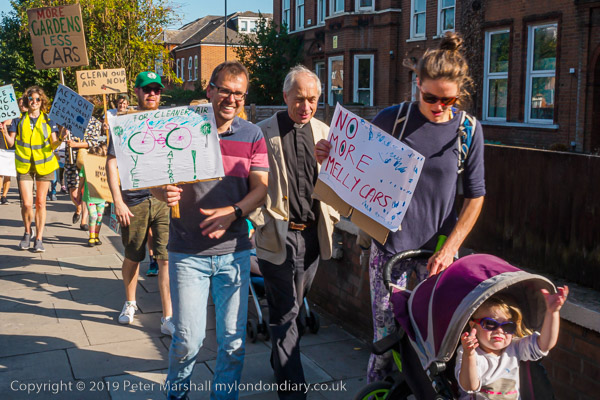
The South Circular Road brings large volumes of traffic through Catford, often pumping out fumes at standstill during peak hours. Particles from brakes, tyres and the road add significantly to the pollution – and won’t be reduced as we switch towards electric cars.
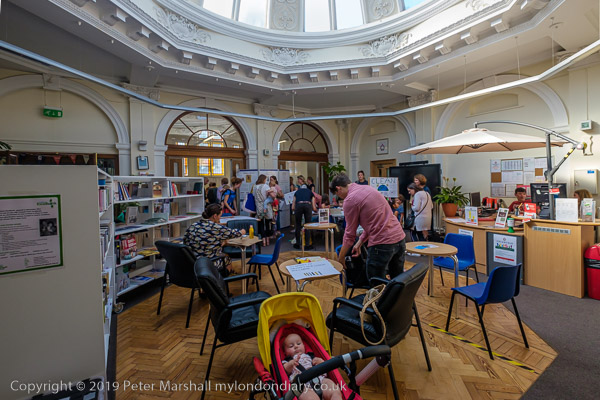
Although a major traffic route, the South Circular has always been more an idea than a planned route, going along many fairly narrow roads lined with houses which were never designed for the traffic. Fortunately major schemes which would have laid waste large areas of highly populated parts of South London have never come to fruition – the obvious environmental devastation of roads like the Westway having put paid to urban motorway schemes.
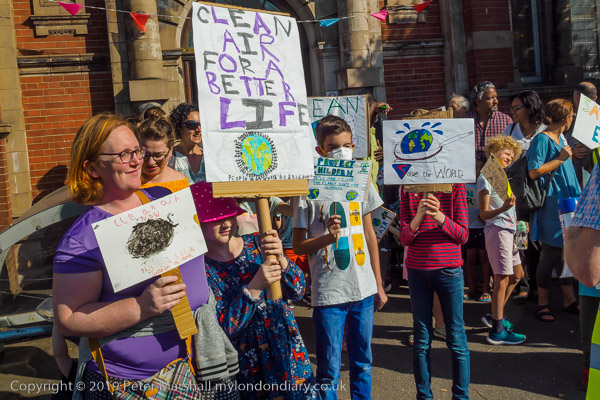
The answer has to be policies at both national and local level which reduce vehicle use and promote greener alternative transport including walking and cycling as well as public transport use. But although Lewisham Council are not responsible for the South Circular Road, remedial actions such as planting screens of trees and hedges can reduce local pollution levels, particularly the levels of harmful particulates.
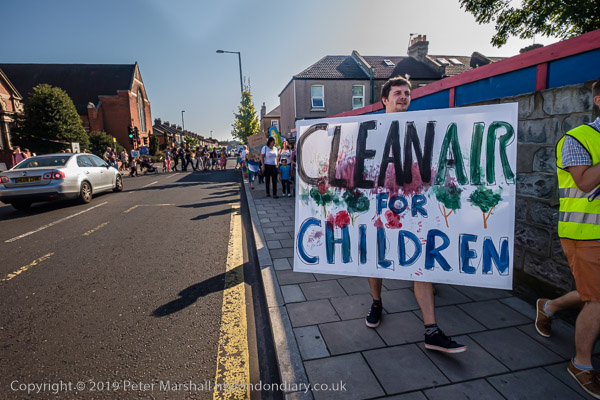
I met local residents at the Corbett Library on Torridon Road in Catford, built with funding from Andrew Carnegie in 1907. It is now a Community Library run by volunteers and is on the Corbett Estate, 3,000 houses around Hither Green developed by Glasgow-born Archibald Corbett from 1896 to 1911.
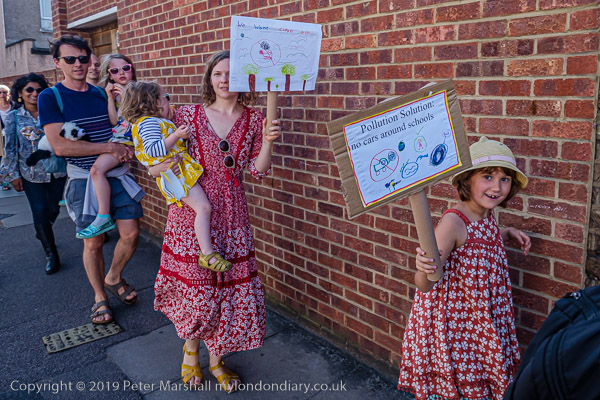
They were busy finishing placards and posters for the march, which soon set off, marching up on the pavement to the South Circular at Brownhill Road, on their way to a rally at the council offices in Lewisham. Traffic on the South Circular made it a little difficult for me to take photographs as it was seldom possible to stand on the road. I left them before the rally to travel home.
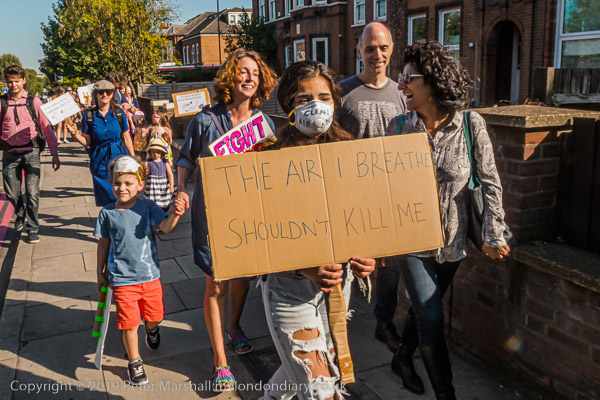
Ella Adoo-Kissi-Debrah, a nine-year-old girl who lived near the South Circular Road in Lewisham died from asthma in 2013. Following a 2020 inquest ruling she was the first first person in the UK to have air pollution listed as the cause of her death on her death certificate.
Clean Air for Catford Children























